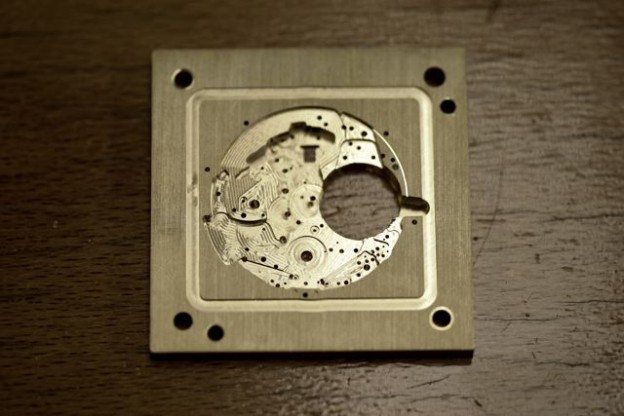
Some say women aren't interested in mechanical watches, but nothing could be further from the truth! The world has changed and watch collections such as Frederique Constant's “Double Heart Beat” spark enthusiasm among members of the fairer sex. Many women believe that a wristwatch should be pretty to look at, able to survive occasional harsh treatment, and practical to operate. But let's examine the facts of the matter more closely. Passion and interest in a highquality mechanical wristwatch don't materialize out of thin air, but grow from a maturation process that usually occurs unseen. The catalyst is often a mutual passion cultivated by a couple. He discovers his love for mechanical watches: she catches the bug from him: her interest grows and soon her passion's intensity rivals his. When a father, a mother or both parents collect mechanical watches, it's only natural that their daughter will become fascinated too. Seeing a beautiful timepiece on a loved one's wrist awakens a woman's desire to own a fine watch of her own. A dynamic and independent businesswoman may wish to impress her male colleagues. And a mechanical wristwatch is a gift that aptly expresses love. As time passes, its recipient discovers and surrenders to the fascination of mechanisms. Ideally, the manufacturer's advertising sparks interest and the specialized trade further fans the flames. Many roads lead to the same destination. Awareness must first be raised about the mechanisms under the dial. Only afterwards does a person comprehend the fine differences between a quartz watch and its mechanical counterpart. Once this consciousness has been raised, he or she soon loses interest in quartz timepieces. It's not without good reason that aficionados regard quartz watches as lifeless, inert matter. Frederique Constant discovered the fascination of mechanical timekeeping at an early stage. The dial was pierced at precisely the location where the aperture would reveal the escapement and prove that this watch has a beating “heart.” This innovation came in 1994, soon after the end of the dull era of the quartz watch, which nearly caused mechanical watches to become extinct. The keyword here is “heart” because a mechanical movement really does have a heartnamely an escapement. Its parts are the pallets, the escapewheel and the balance, which is composed of a balancewheel and a hairspring. When the balance tirelessly swings to and fro in uniform semioscillations, the balancewheel alternately rotates through nearly a halfturn in the clockwise direction, immediately followed by an identical but counterclockwise near halfturn. Meanwhile, the paperthin hairspring contracts and expands over and over again. These uniform concentric motions can be compared to the beats of a healthy heart, which indefatigably repeats unvarying pumping motions that cause blood to circulate through our body. The choice of the name “Heart Beat” for this new type of watch was thus not coincidental. The aperture in the dial invites connoisseurs to peer directly into the “heart” of the mechanical watch, where they can admire the working of its balance and view the pumplike motions of the spirally coiled hairspring through a loupe. Unlike a prosaic quartz watch, this type of timepiece is vividly alive. Nowadays, concepts such as “Heart Beat,” “Double Heart Beat,” “Love Heart Beat” and “Amour Heart Beat” designed by ShuQi have evolved into permanent features in the identity of Frederique Constant. And the people in geneva, where Frederique Constant is headquartered, are justifiably proud of these achievements. Imitation is the sincerest form of flattery and good ideas typically attract imitators. The aperture in the dial wasn't protected by a patent, so competitors soon began cutting openings into their dials too. Be that as it may, there's only one original. And it's made solely by Frederique Constant!
No Fields Found.

